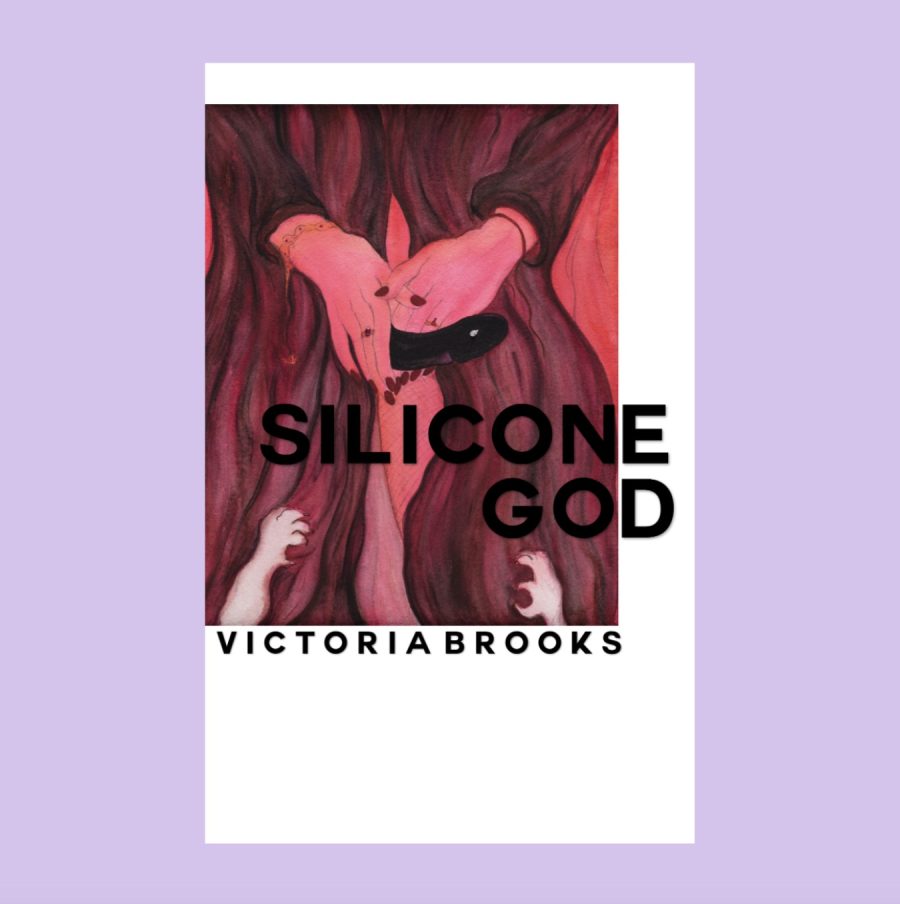Queer sci-fi, EMDR and PTSD: When writing and therapy collide
By: Vic Brooks

Content warning: This article mentions trauma and sexual abuse.
I’ve zipped across decades in a flash. I’ve explored parallel dimensions and met a thousand versions of myself flying through the multiverse.
And I’ve done this all while sitting perfectly still in two places on planet Earth: my writer’s desk and my therapist’s office.
Image: Algol’s Mistress, 2021, glazed ceramic, 50 x 48 x 22 cm. Zoe Williams, courtesy of the artist and Ciaccia Levi, Paris-Milan. Photo by Aurélien Mole.
I began EMDR (Eye Movement Desensitisation and Reprocessing) for PTSD (post-traumatic stress disorder) at the same time I did the bulk of the research and writing for my recently published queer sci-fi novel.
My book, Silicone God, is fiction, but it’s also based on my own personal story.
The narrator, Shae, is queer and probably non-binary. They’re trying to recover from being a serial side-chick to a string of abusive married men.
They go through many of the same traumas that I’ve gone through. But they also birth alien jellyfish and meet a woman with silicone flesh from a future dimension.
Because EMDR was a new kind of therapy, my therapist and I decided that we needed to go back to the beginning of my story. This meant we needed to give depth to the characters involved, bringing them to life.
My symptoms (flashbacks, nightmares, chronic pain, anxiety and occasional panic) were a result of sexual assault and domestic violence perpetrated by various monsters – worse than Ridley Scott’s Xenomorphs and who I don’t care to name – over two decades.
But characters, especially villains, need names. Right?
Names are particularly powerful in one of my favourite sci-fi short stories, Ursula Le Guin’s The Rule of Names. In this story, to know someone’s “truename” (and therefore their truth) is to gain power over them.
Yet when I said the names of the men who hurt me out loud, I felt the opposite: like I had lost power.
In my next session, we began the reprocessing of my traumatic memories.
EMDR therapy is based on the idea that the brain doesn’t process traumatic memories properly. This means the brain (and the body) won’t get the signal that the danger is over. This can cause an ‘injury’ to the brain, which takes the form of PTSD.
To help me process my memories properly so I could begin to heal, my EMDR therapist needed to repeatedly stimulate the left and right sides of my brain. She said this would keep my “thinking mind” out of our way while we dealt with the trauma.
For me, this meant sitting in a chair across from an alien-looking light bar. My therapist asked me to call to mind a particular memory (with its associated feeling) that was the subject of my nightmares.
Then she told me to keep my eyes glued to the neon light as it zapped from side to side.
I saw him. A huge man with a red face shouting at me, about to grab me and throw me across the room. I kept watching the light.
I then flew back 10 years in time, to a memory of my Dad telling me to sit “like a girl” with my legs together. Then to another man telling me I was “mannish” because I liked girls.
Then I was back with the angry shouting man.
“What do you need?” my therapist asked after I reported the interstellar journey.
Help, was the main thing.
She told me to bring in my wise unicorn. We had previously decided on this magical saviour together, who would always be on call to rescue me when things seemed desperate, or if I felt trapped. She was to be the inner sense of safety and self-worth I had never developed, and was missing at the time of the memory.
My therapist instructed me to ask the unicorn if she would magically take away the scary man’s voice, and also give him a new name.
He was named the Red-Faced Man. And with that, he was transformed from being an ogre of my subconscious to being a character that I could control. His power was, at last, transferred to me.
I could rescript the memory and re-write my story however I wished.
I could believe that I deserved better. I could walk away. I could shrink him. I could mute him.
A story is more than just characters.
I received weekly homework. For one of the tasks, my therapist asked me to imagine a story where not only am I empowered, but I get justice. For me, justice features revenge, as well as dreams of a better future.
Luckily, these themes are abundant in sci-fi and horror, particularly queer versions of these genres, so I had plenty of places to start.
The joy of queer sci-fi is in its tenacity – its enduring ability to see light after the dark.
Queer sci-fi sees a future outside of binary genders, sexualities and relationship structures that have hurt us for generations.
Take for instance NK Jemisin’s The Fifth Season. It’s a heavy tale of systemic oppression and intergenerational trauma, but woven throughout are sparks of queer possibility.
Then there’s the dazzling array of queer identities in Larry Mitchell’s The Faggots and their Friends Between Revolutions: the Dykalets, Faggatinas, Fairies and the Queens, whose potential for changing the world are as endless as they are revolutionary. Meanwhile, “The Men” in the book are exceptionally plain, but hate-filled, paper-loving destroyers of the earth.

Silicone God by Victoria Brooks, MOIST Publishing, 2023. Cover design: Zoe Williams.
I wanted control. But I also wanted punishment for my perpetrators. I wanted systemic change.
I wanted justice like in Octavia Butler’s Bloodchild, where reproductive systems are manipulated, so that men have to give birth to parasites that eat them from the inside.
But a novel based on my trauma needed more than justice. Roxanne Gay wrote that it’s important for the writer to keep in mind whether they are seeking catharsis, or telling a good story for the eyes of an audience.
My answer was both. I think I also had a secret third wish for the reader to feel my rage. Maybe I wanted them, just for a while, to sit in my therapist’s chair.
Alison Rumfitt nails the balance of rage, catharsis and great storytelling in her queer horror classic Brainwyrms.
The monsters are hiding in plain sight: TERFs (trans-exclusionary ‘radical’ feminists), misogynists and racists in seemingly human skins.
As well as being a lament on a fractured queer community, Rumfitt invents a whole new way of trauma writing. The prose is desperately hard to read. You’ll need several breaks when reading Brainwyrms; the rotten body of transphobia is rancid.
I’ve finished the book, but the stench still lingers in my nose. It’s relentless – echoing the horror of living as a trans person in a transphobic world.
In Becky Chambers’ On Our Way to a Small Angry Planet, a bunch of queers, aliens and queer aliens manage to help heal each other, despite all being radically different from one another.
The tenderness of Chambers’ book affected me so much that I told my therapist about it.
She said my love for it made her sad. This made sense, since I remembered often feeling close to tears when reading it – like joy tinged with grief.
She went on to say that this feeling was perhaps present because there were parts of me still feeling alien, waiting to be loved.
I decided I’d learn to love the alien parts of me by writing about them.
First I had to lay them bare, and hope that readers would love them. I couldn’t be sure that they would. That made it scary, like walking into a room naked right down to my soul.
But I took the leap. I wrote a world where these parts, which I saw as my ‘failures’ – like my ‘failure’ to be a good person or a victim, and my ‘failure’ at being queer – were on display, embodied by my narrator and main character.
I created a storyworld where things like being queer, slutty and a side-chick were prized instead of judged. I wrote a chapter entitled ‘Becoming a Mistress’, where men were known just by names like The Professor or Swinger James. Simple men.
I used sci-fi writing as a means of gifting my story to my queer readers.
After reading an evil book that tells her (well, my) trauma story, my narrator births foul aliens called jellybabies, which are then cut open by her very hot queer saviour.
Weaving this storyline felt like a leap of faith. I guess I was hoping my readers would be my hot queer saviours, strong enough to catch me and my jellybabies.
I will never be totally free of PTSD, but through EMDR and re-writing my story, my brain is learning that I’m safe – not just in the world, but within myself.
Those jellybabies bled judgement and desire. Darkness and freedom.
I wrote a book like my therapist’s office. But with you, my reader, in her chair.













